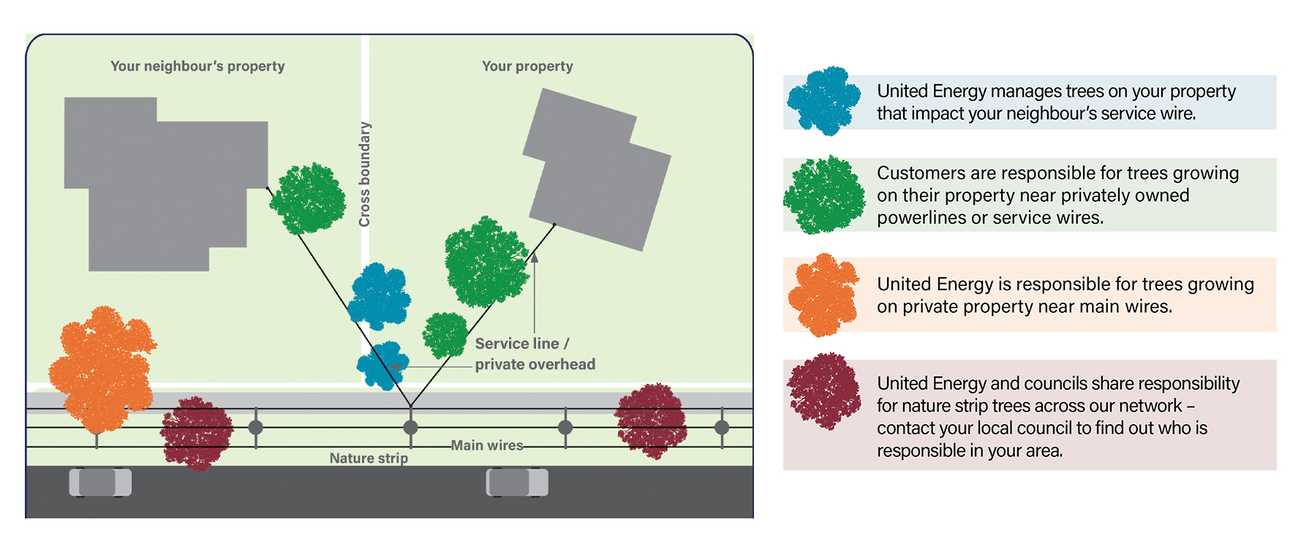Tree cutting near powerlines
Overgrown branches near powerlines can pose risks such as power outages or fires, especially during severe weather conditions.
This is why we regularly inspect trees around our poles and wires and cut them back as necessary. Trees are trimmed and maintained in a way that helps us deliver a safe and reliable electricity supply while adhering to electricity safety regulations. While we understand the tree’s appearance after trimming may not always be aesthetic, it ensures that we’re keeping our community safe.
It is important we all play our part to keep our community safe, including you.
Who's responsible for managing trees near powerlines?
- 01Our obligations
- 02Your obligations (as a landowner)
- 03Local government obligations

Our tree cutting program
We inspect and cut trees around powerlines to ensure they stay a safe distance. Depending on the tree species and location, we may carry out additional trimming where the regular cycle isn’t sufficient to provide enough clearance. Trees are cut to meet safety requirements plus additional space allowed for regrowth, to ensure power safety.
Generally, our program will focus on rural (higher bushfire risk areas) areas while paddocks are dry and accessible before moving to urban (lower bushfire risk areas) during the wetter winter months.

- 1. Conduct inspection
- 2. Send notification
- 3. Tree cutting
- 4. Debris cleanup
Vegetation and tree cutting enquiries
We offer different types of tree cutting requests. Use the information below to guide your enquiry and submit it through our myEnergy portal. You’ll need to register an account to submit a request.
For Tree No Go Zone cutting enquiries, visit our No Go Zone page for more information.
- Report a tree close to powerlines
- Request cutting within the Tree No Go Zone
- When are you coming to cut my tree?
- When are you coming to collect the debris from trimming?
- I'm unhappy about how my trees were cut
Submit a tree cutting enquiry
Tree cutting enquiries are made via myEnergy. Login or register and go to 'Customer Resolution Centre' section to start your enquiry.
To ensure we can deliver a safe and reliable electricity supply, we need to be able to inspect and maintain trees near our powerlines and poles. At times this may require us to access your premises. Under the Electricity Safety Act you must provide us and our authorised representatives with safe and unhindered access to your premises. We will leave a printed notification at your property between 14 and 60 days before tree trimming is happening in your area, and where practical, we will notify you before accessing your property


